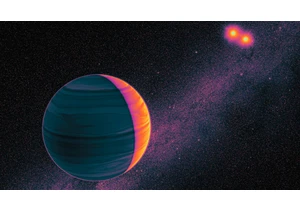From film and digital portfolios to the infinite scroll of social media, photography has long fueled our imagination, evolving in step with our technology while helping us distill a timeless version of reality. Think about flipping through your camera roll. Colors, faces, landscapes whizzing by. Photos have the power to transport you. And yet the destination remains two-dimensional, no matter how high the pixel count or how masterful the composition. Imagine the reality-altering effect, then, of a photo—and the memory it evokes—that you could visit and revisit in its entirety. Though highly speculative in its specifics, the metaverse has broken open our understanding of interactive media, raising an existential question about the definition of photography itself. I’ve spent my career finding new ways to capture those singular moments and building software tools that help others do the same. Nearly 30 years since my first gig, I’ve never been more excited about how technology is reinventing what we’re capable of. While the internet and rise of photo sharing apps accelerated the creation and consumption of photography, the metaverse has already begun to upend its mechanics. Free from limitations of past devices or even the laws of physics, photography in the metaverse unlocks previously unimaginable liberty to explore light, color, perspective and output. In a culture of content creators reckoning with the “move fast, break things” fallout of Web 2.0, this new digital frontier offers an opportunity to ask ourselves: How can we reclaim visual storytelling in a way that fosters connection? What rules of artistic ethics will we need to rewrite? If we could do it all over again, what would we do better? Metaverse photography will unleash a new creative category Photography can and will become more than the still images we exchange today. With 3D layers embedded with sound (even smell), metaverse photography will enable perception beyond the eyes, forging a new category of art, a new kind of sensory experience. This pivot to immersive imagery is apparent in revolutionary creators like REO, who have blended skills in photography and digital art to produce non-fungible, genre-bending work. It’s difficult to fully conceptualize the creative possibilities in such early stages of the metaverse, but think, for a moment, of a flight simulator. You’re sightseeing in an unfamiliar world dotted with stars in highlighter hues. Safely exiting the cockpit, you drift into the twinkling atmosphere, weightlessly capturing multidimensional frames with only your “eyes.” While a robust, connected experience of the metaverse could easily be decades away, it’s already started expanding our vision for image creation, opening the playing field to new kinds of creators. The metaverse will break barriers between photographer and spectator From shared digital spaces that serve as an extension of our own reality (think floating shopping mall) to the expansion of existing multiplayer universes, photography will play a critical role as a building block of new virtual experiences and a bridge from one world to the next. But image capture across planes raises unexplored questions about the relationship between photographer, photograph and spectator: Can you take a picture inside a picture? What do you call an image that blends the real and the virtual? While the way we capture what we see may change, our want to remember, interpret and re-imagine will persist, inspiring even more personalized and immersive viewing experiences. Not only does metaverse photography open up unchartered possibility for creative expression, it offers a new means of communication and connection, whether you’re an artist or art collector, a customer or brand. Photographers will have the power to transport viewers, and viewers will become participants in the photos they consume. The decentralized art economy will bring risk and reward One of the most exciting things about photography in the metaverse will be the opportunity for new artists to stake their claim in the space and existing creators to reach new audiences. I spoke recently with a friend and fellow photographer Tobi Shinobi, who offered helpful perspective. “Instagram went so far as to democratize the creative industry for people like myself, who probably would have never considered getting into photography,” he says. “Web 3.0 has taken that democratization to the next level. It’s democratizing the platforms themselves.” “Right now, you can now build your own community,” Shinobi adds, reflecting on the explosion of NFT creators in his network. Increased attention on digital art has already accelerated exposure for recent entrants on the scene who now have independent channels to generate royalties, unencumbered by the algorithms or terms and conditions of today’s dominant social platforms. That said, there are certainly some potentially scary consequences of a decentralized web. This wild west of photography, including the transfer of real-world images to virtual dimensions, demands we revisit foundational regulations of the artform. As we begin to grasp the complexity of NFTs copyright laws, it behooves us to ask what the watermark of the metaverse will look like. Creators and platform leaders must refresh rules of consent when our cameras become invisible and even rendered scenic backdrops become a proprietary subject. We still need broad education about defining token value across blockchain platforms, distinguishing between possession and ownership of art and refining asset verification tools like Photoshop Content Credentials for any creator looking to protect their work. For 200 years, photos have offered us a window into new experiences and perspectives, and we have a chance to take what we’ve learned and build a better platform for this exchange. In spite of the many unknowns, I remain hopeful as we look to the future—imagining how the metaverse will revolutionize photography and the ways in which photography will help visualize what the metaverse can become. Bryan O’Neil Hughes is the director of product management at Adobe and has spent nearly 30 years as a professional photographer.
Jelentkezéshez jelentkezzen be
EGYÉB POSTS Ebben a csoportban

Child psychologists tell us that around the age of five or six, children begin to seriously contemplate the world around them. It’s a glorious moment every parent recognizes—when young minds start

During January’s unprecedented wildfires in Los Angeles, Watch Duty—a digital platform providing real-time fire data—became the go-to app for tracking the unfolding disaster and is credit



Yahoo’s bet on creator-led content appears to be paying off. Yahoo Creators, the media company’s publishing platform for creators, had its most lucrative month yet in June.
Launched in M

From being the face of memestock mania to going viral for inadvertently stapling the screens of brand-new video game consoles, GameStop is no stranger to infamy.
Last month, during the m

The technology industry has always adored its improbably audacious goals and their associated buzzwords. Meta CEO Mark Zuckerberg is among the most enamored. After all, the name “Meta” is the resi
